I know a lot of people that like to read. Some of them might call themselves book nerds. This list of books is not necessarily for them, though, because while they definitely read a bunch, do they really like to read about books? This is second-order book nerddom. Let me show you around.
I keep a look out for titles that fit into this category, and below you’ll find 17 books coming out this fall(ish) that are not ashamed about being for people whose affinity for reading extends to books themselves, language, publishing, criticism, anthologies, and the like. Yea, I still don’t have the right language for this. Better press on.
For each book, I’ve included the publisher’s description and a Nerd Rating. 1 being the lowest level of nerdery. (Note: I am going to tip-toe up to the edge of scholarly work, but not cross that threshold. The below, as I understand them, are meant for non-academic readers. Note, the second: people of color are under-represented as subjects and authors of these kinds of books. If you know of one for the fall that I missed, please shoot us an email!)
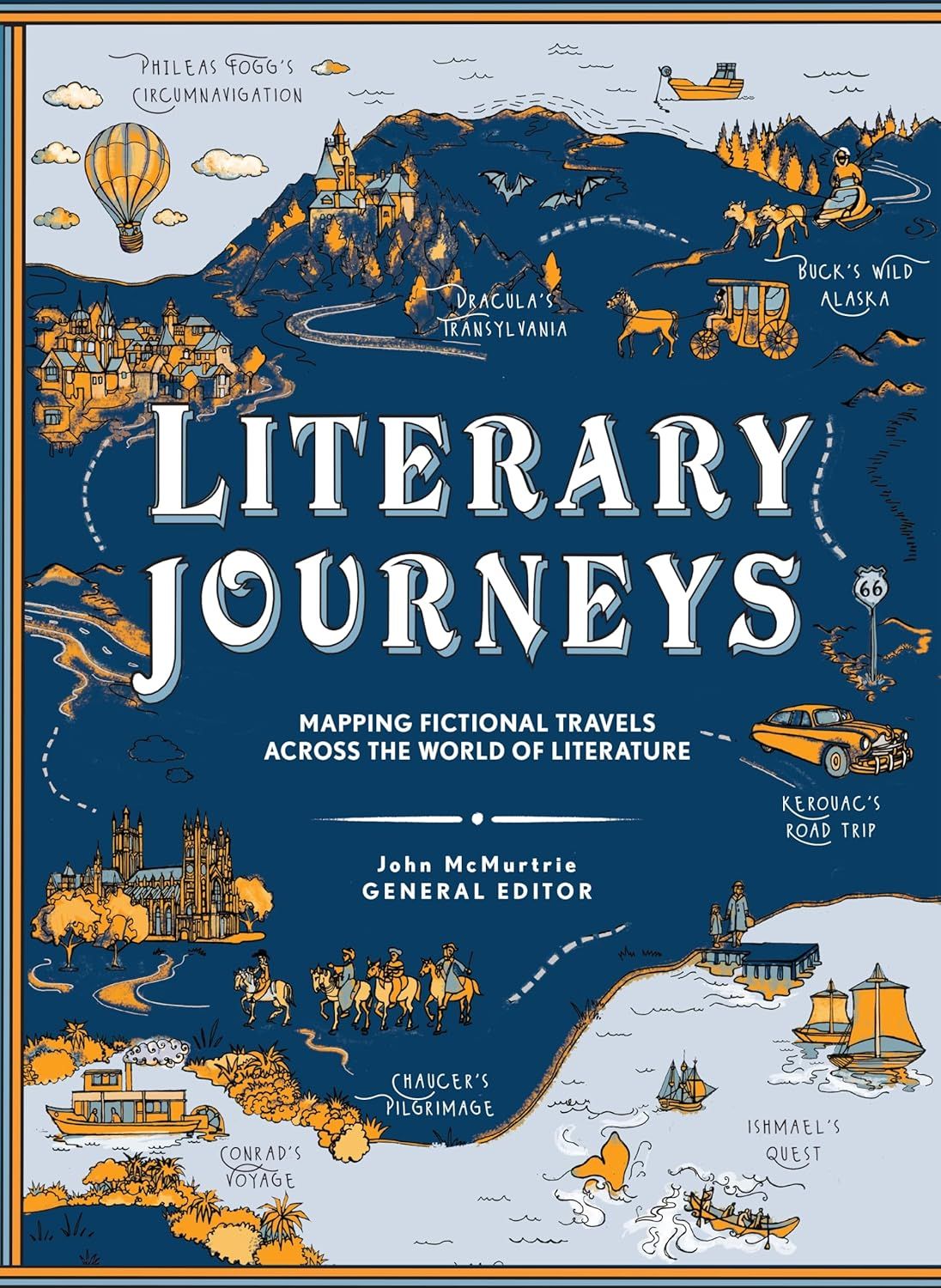
Literary Journeys: Mapping Fictional Travels Across the World of Literature (Princeton University Press, September 10)
Publisher’s Description:
From Homer’s Odyssey, Chaucer’s Canterbury Tales, and Cervantes’s Don Quixote to Melville’s Moby-Dick, Kerouac’s On the Road, and Chimamanda Ngozi Adichie’s Americanah, some of the most powerful works of fiction center on a journey. Extending to the ends of the earth and spanning from ancient Greece to today, Literary Journeys is an enthralling book that takes you on a voyage of discovery through some of the most important journeys in literature. In original essays, an international team of literary critics, scholars, and other writers explore exciting, dangerous, tragic, and uplifting journeys in more than seventy-five classic and popular works of fiction from around the world. Chronologically arranged and gorgeously illustrated throughout with paintings, engravings, photographs, and maps in full color, this captivating book will appeal to readers who have travelled widely, who are planning a trip, or who love armchair travel.
Nerd Rating: 7. Fake maps of fake stories is pretty high up there.
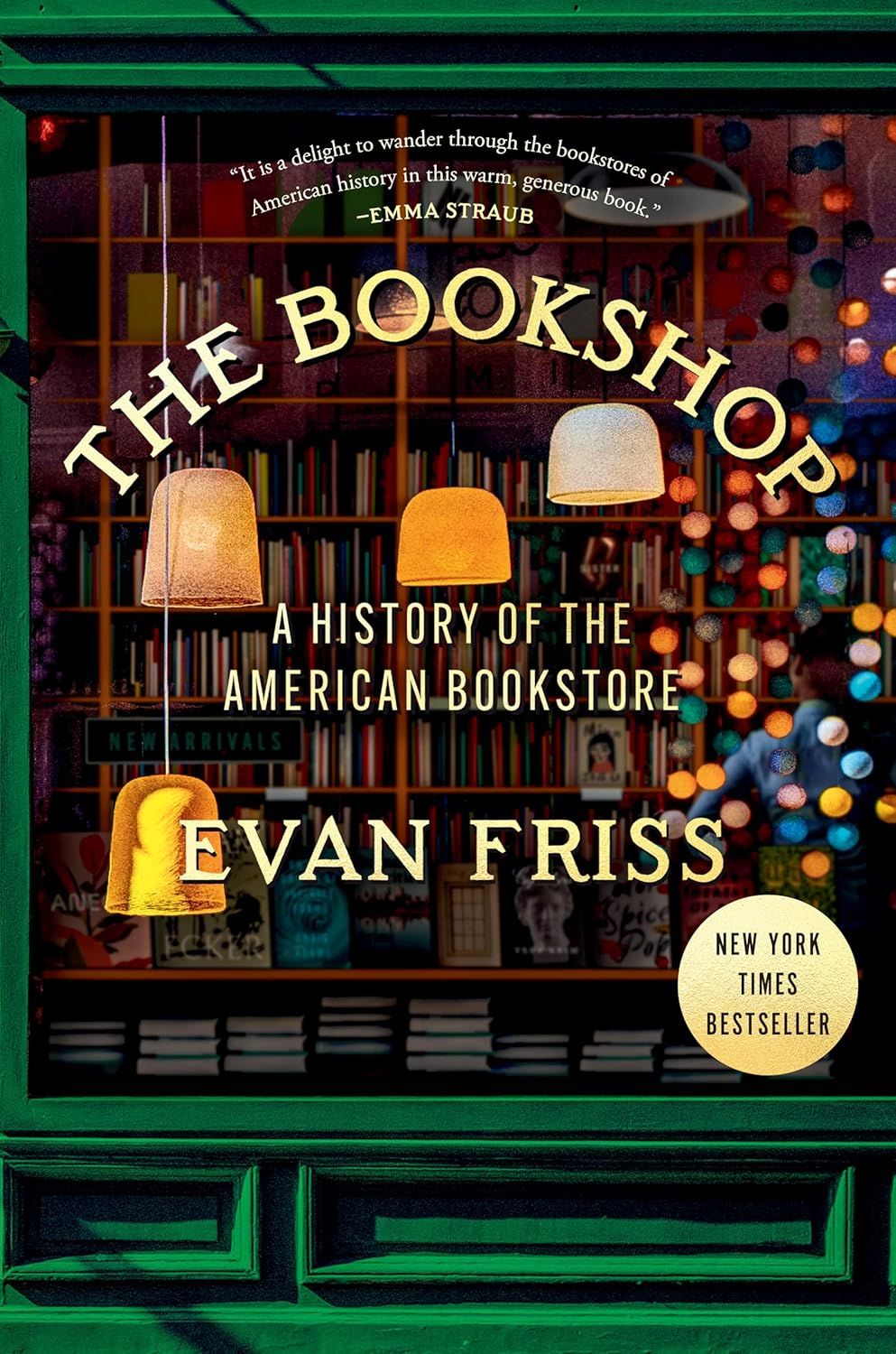
The Bookshop: A History of the American Bookstore by Evan Friss (Viking, August 6th)
Publisher’s Description:
Evan Friss’s history of the bookshop draws on oral histories, archival collections, municipal records, diaries, letters, and interviews with leading booksellers to offer a fascinating look at this institution beloved by so many. The story begins with Benjamin Franklin’s first bookstore in Philadelphia and takes us to a range of booksellers including the Strand, Chicago’s Marshall Field & Company, the Gotham Book Mart, specialty stores like Oscar Wilde and Drum and Spear, sidewalk sellers of used books, Barnes & Noble, Amazon Books, and Parnassus. The Bookshop is also a history of the leading figures in American bookselling, often impassioned eccentrics, and a history of how books have been marketed and sold over the course of more than two centuries—including, for example, a 3,000-pound elephant who signed books at Marshall Field’s in 1944.
Nerd Rating: 5. It’s not impossible to imagine someone interesting in cultural history more generally picking this up.
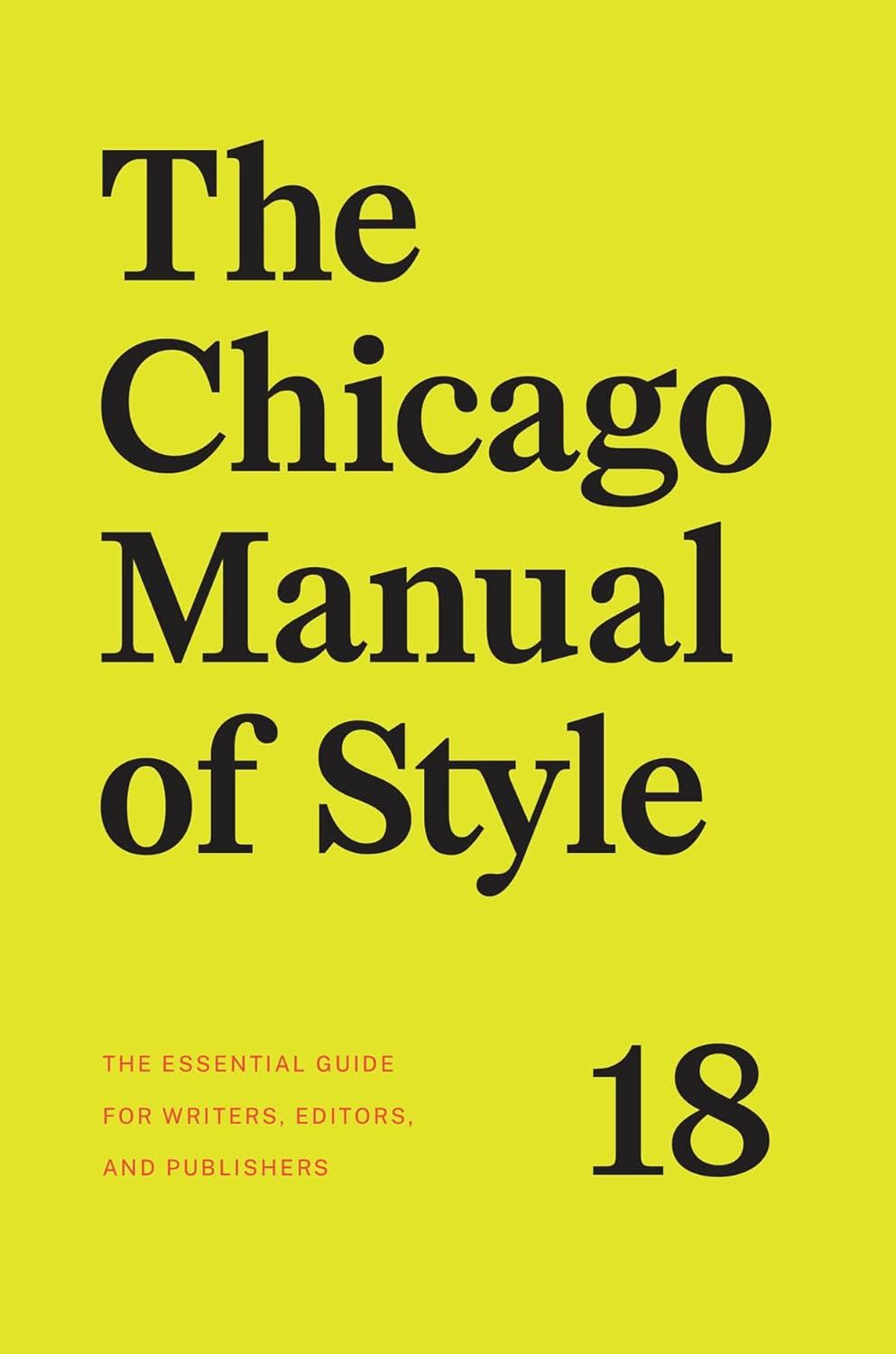
The Chicago Manual of Style, 18th Edition (September 19th, University of Chicago Press)
Publisher’s Description:
Every chapter has been reexamined with diversity and accessibility in mind, and major changes include updated and expanded coverage of pronoun use and inclusive language, revised guidelines on capitalization, a broader range of examples, new coverage of Indigenous languages, and expanded advice on making publications accessible to people with disabilities. The Manual’s traditional focus on nonfiction has been expanded to include fiction and other creative genres in coverage of topics such as punctuation and dialogue, and the needs of self-published authors receive wider attention.
Nerd Rating: 2 or 10. If you have to pick this up because you regularly actually need to reference it, then that’s a 2. If you are just interested generally in how AI citations are handled or what the best practices are for inclusive language, then that’s a 10.
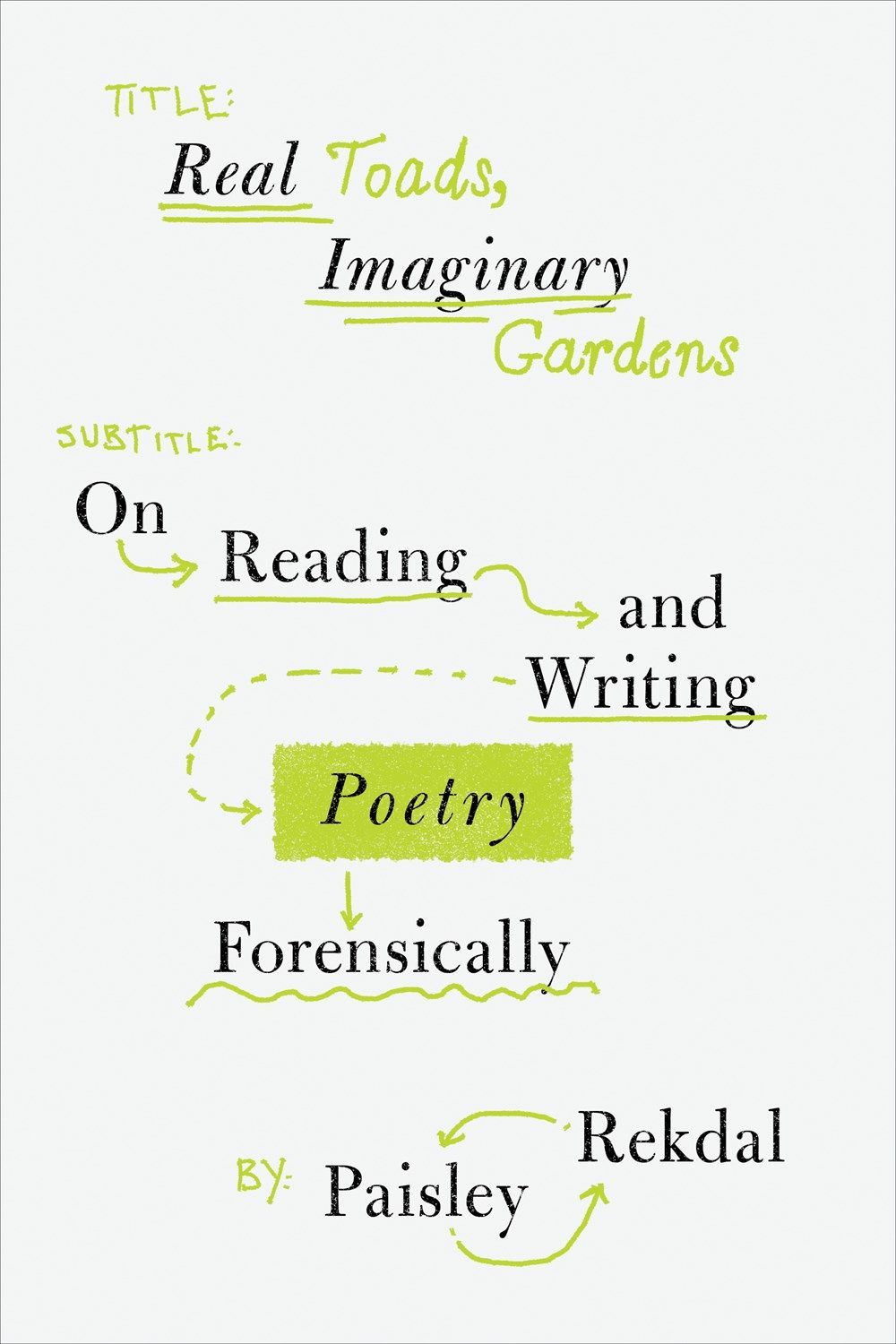
Read Toads, Imaginary Gardens: On Reading and Writing Poetry Forensically by Paisley Rekdal (Norton, October 22)
Publisher’s Description:
What makes reading a poem unlike reading anything else? In Real Toads, Imaginary Gardens, acclaimed poet and teacher Paisley Rekdal demonstrates how to observe the building blocks of a poem—including its diction, form, imagery, and rhythm—and construct an interpretation of its meaning. Using guided close readings and nearly 40 creative and critical “experiments,” this book shows how a poem takes shape through the intersection of all its lyric elements. Drawing on the work of poets from William Shakespeare to Jericho Brown, Real Toads, Imaginary Gardens reveals how to read and write critically, and how to appreciate—and achieve—the exhilarating craft of poetry.
Nerd Rating: 8. Weird title. Close Readings. Poetry. “experimental” exercises. That’s the stuff.

Much Ado About Numbers: Shakespeare’s Mathematical Life and Times by Rob Eastaway (The Experiment, Sept 10).
Publisher’s Description:
Shakespeare’s era was abuzz with mathematical progress, from the new concept of “zero” to Galileo’s redraft of the heavens. Now, Rob Eastaway uncovers the many surprising ways math shaped Shakespeare’s plays—and his world—touring astronomy, code-breaking, color theory, navigation, music, sports, and more.
- How reliable was a pocket sundial?
- Was math illusionist John Dee the real-life Prospero?
- How long was a Scottish mile, and what could you buy for a groat?
- Do Jupiter’s moons have a cameo in Cymbeline?
- How did ordinary people use numbers day to day?
- And might Shakespeare have tried that game-changing invention—the pencil?
Nerd Rating: 9. Only that Shakespeare is a figure that transcends literature does that keep this from being a 10. I mean, come on—do Jupiter’s moons have a cameo in Cymbeline?! I would assume….yes?
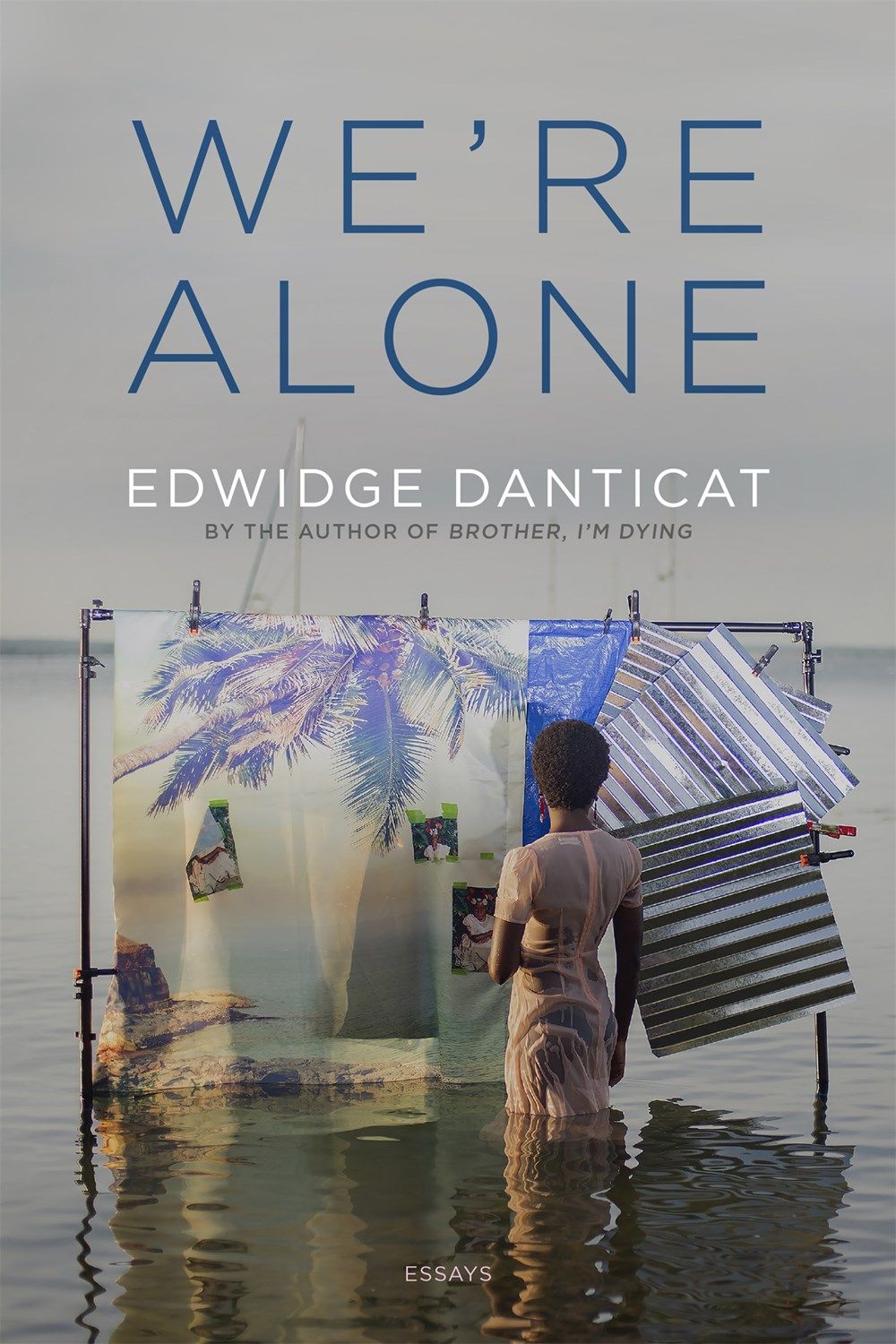
We’re Alone Essays by Edwidge Dandicat (Graywolf, Sept. 3)
Publisher’s Description: Tracing a loose arc from Edwidge Danticat’s childhood to the COVID-19 pandemic and recent events in Haiti, the essays gathered in We’re Alone include personal narrative, reportage, and tributes to mentors and heroes such as Toni Morrison, Paule Marshall, Gabriel García Márquez, and James Baldwin that explore several abiding themes: environmental catastrophe, the traumas of colonialism, motherhood, and the complexities of resilience.
From hurricanes to political violence, from her days as a new student at a Brooklyn elementary school knowing little English to her account of a shooting hoax at a Miami mall, Danticat has an extraordinary ability to move from the personal to the global and back again. Throughout, literature and art prove to be her reliable companions and guides in both tragedies and triumphs.
Nerd Rating: 3. Not sure that you need horribly book-addled to be interested in what Dandicat has to say about Morrison and Marquez, among others.
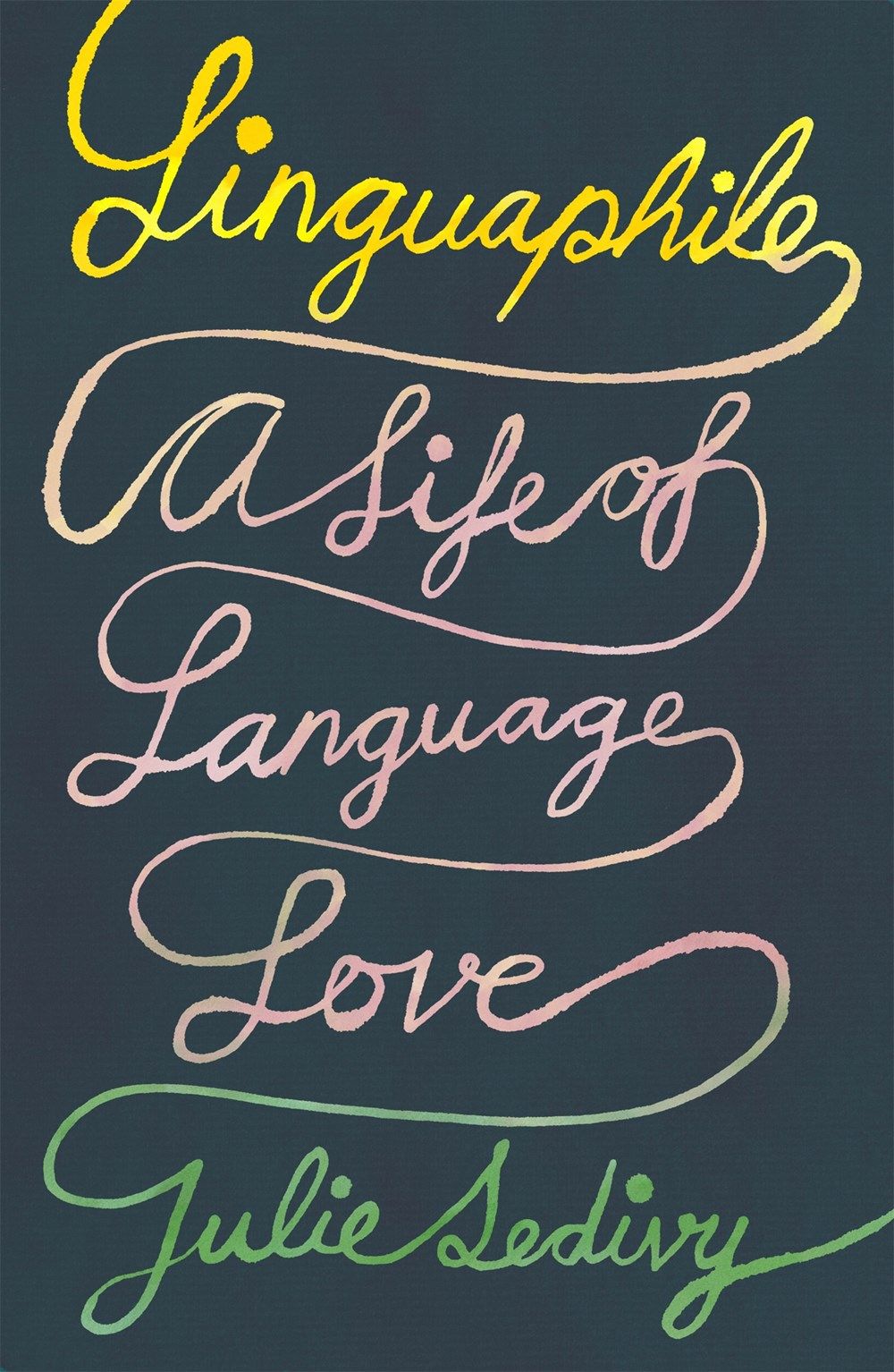
Linguaphile: A Life of Language Love by Julie Sedivy (Oct 15, FSG)
Publisher’s Description:
Linguaphile: A Life of Language Love follows the path that language takes through a human life—from an infant’s first attempts at sense-making to the vulnerabilities and losses that accompany aging. As Sedivy shows, however, language and life are inextricable, and here she offers them together: a childish misunderstanding of her mother’s meaning reveals the difficulty of relating to other minds; frustration with “professional” communication styles exposes the labyrinth of standards that define success; the first signs of hearing loss lead to a meditation on society’s discomfort with physical and mental limitations.
Part memoir, part scientific exploration, and part cultural commentary, this book epitomizes the thrills of a life steeped in the aesthetic delights of language and the joys of its scientific scrutiny.
Nerd Rating: 4. Hmmm, I think this sounds pretty cool just in general, but then my calibration for this stuff is more than one standard deviation from the mean.

Stranger Than Fiction: Lives of the Twentieth-Century Novel by Edwin Frank (FSG, Nov 19)
Publisher’s Description:
Starting withDostoevsky’s Notes from Underground of 1864, Frank shows how its twitchy, self-undermining narrator established a voice that would echo through the coming century. He illuminates Gertrude Stein’s and Ernest Hemingway’s reinvention of the American sentence, Colette’s and André Gide’s subversions of traditional gender roles, and the monumental ambitions of works such as Mrs. Dalloway, The Magic Mountain, and The Man Without Qualities to encompass their times. Frank also shows how Japan’s Soseki and Nigeria’s Chinua Achebe adapted European models to their own ends—and how Vasily Grossman, Hans Erich Nossack, and Elsa Morante did the same as they attempted to reckon with the traumas of World War II. Later chapters range from Ralph Ellison and Marguerite Yourcenar to Gabriel García Márquez and W. G. Sebald.
Nerd Rating: 8. Hemingway, Dostoevsky, Woolf–not that nerdy. Nossack, Grossman, Morante–very, very nerdy.

Constant Reader by Dorothy Parker (McNally Editions, November 5)
Publisher’s Description:
When, in 1927, Dorothy Parker became a book critic for the New Yorker, she was already a legendary wit, a much-quoted member of the Algonquin Round Table, and an arbiter of literary taste. In the year that she spent as a weekly reviewer, under the rubric “Constant Reader,” she created what is still the most entertaining book column ever written. Parker’s hot takes have lost none of their heat, whether she’s taking aim at the evangelist Aimee Semple MacPherson (“She can go on like that for hours. Can, hell—does”), praising Hemingway’s latest collection (“He discards detail with magnificent lavishness”), or dissenting from the Tao of Pooh (“And it is that word ‘hummy,’ my darlings, that marks the first place in The House at Pooh Corner at which Tonstant Weader Fwowed up”).
Introduced with characteristic wit and sympathy by Sloane Crosley, Constant Reader gathers the complete weekly New Yorker reviews that Parker published from October 1927 through November 1928, with gimlet-eyed appreciations of the high and low, from Isadora Duncan to Al Smith, Charles Lindbergh to Little Orphan Annie, Mussolini to Emily Post.
Nerd Rating: 5. Parker, check. The New Yorker, check. Being actually about the rigors of book reviewing? With a forward by Sloane Crosley? Hot stuff.

An Atlas of Endangered Alphabets by Tim Brookes (Mobius, Nov 12)
Publisher’s Description:
If something is important, we write it down. Yet 85% of the world’s writing systems are on the verge of vanishing – not granted official status, not taught in schools, discouraged and dismissed.
When a culture is forced to abandon its traditional script, everything it has written for hundreds of years – sacred texts, poems, personal correspondence, legal documents, the collective experience, wisdom and identity of a people – is lost.
This Atlas is about those writing systems, and the people who are trying to save them. From the ancient holy alphabets of the Middle East, now used only by tiny sects, to newly created African alphabets designed to keep cultural traditions alive in the twenty-first century: from a Sudanese script based on the ownership marks traditionally branded into camels, to a secret system used in one corner of China exclusively by women to record the songs and stories of their inner selves: this unique book profiles dozens of scripts and the cultures they encapsulate, offering glimpses of worlds unknown to us – and ways of saving them from vanishing entirely.
Nerd Rating: hmmmmm. An atlas. About writing systems. That almost don’t exist. Gotta go 9.

Becoming Belle da Costa Greene by Deborah Parker (Villa I Tatti, October 8, 2024).
Publisher’s Description:
In Becoming Belle da Costa Greene: A Visionary Librarian through Her Letters, Deborah Parker chronicles the making and empowerment of a female connoisseur, curator, and library director in a world where such positions were held by men. Belle da Costa Greene (1879–1950) was Pierpont Morgan’s personal librarian (1908–1913) and the first Director of the Morgan Library (1924–1948). She was also the daughter of two mixed-race parents and passed for white. In the nearly six hundred letters that Greene sent to art historian Bernard Berenson (1865–1959), Parker identifies Greene’s energetic pursuit of exceptional opportunities, illuminating the artistry and imaginative features of Greene’s writing—her self-invention, her vibrant responses to books and art, and her pathbreaking work as a librarian. As Greene transformed a private library into a magnificent public institution, she also transformed herself: hers was a life both lived and writ large.
Nerd Rating: 10. But it is a 1 in my heart. Da Costa’s Greene life and story is a remarkable one, and she was a wonderful letter writer.

Revisionaries: What We Can Learn from the Lost, Unfinished, and Just PLain Bad Word of Great Writers by Kristopher Jansma (Quirk Books, Oct 15).
Publisher’s Description:
f you like to write—whether it’s a pastime, a passion, or a profession—you’ve probably found yourself reading something brilliant and thinking, “I could never do this! I might as well give up.” But if there’s one thing every great author has in common, it’s this: they’ve all written some hot garbage.
Revisionaries takes you on an engrossing tour through the discarded drafts, false starts, and abandoned projects of influential writers. In the process, it dismantles some of our most deeply held—and most suffocating—ideas about what it takes to produce great creative work.
Nerd Rating: Books for aspiring writers exist on a parallel, but separate, plane from books for book nerds, but this one transects those lines. Going with a 7.
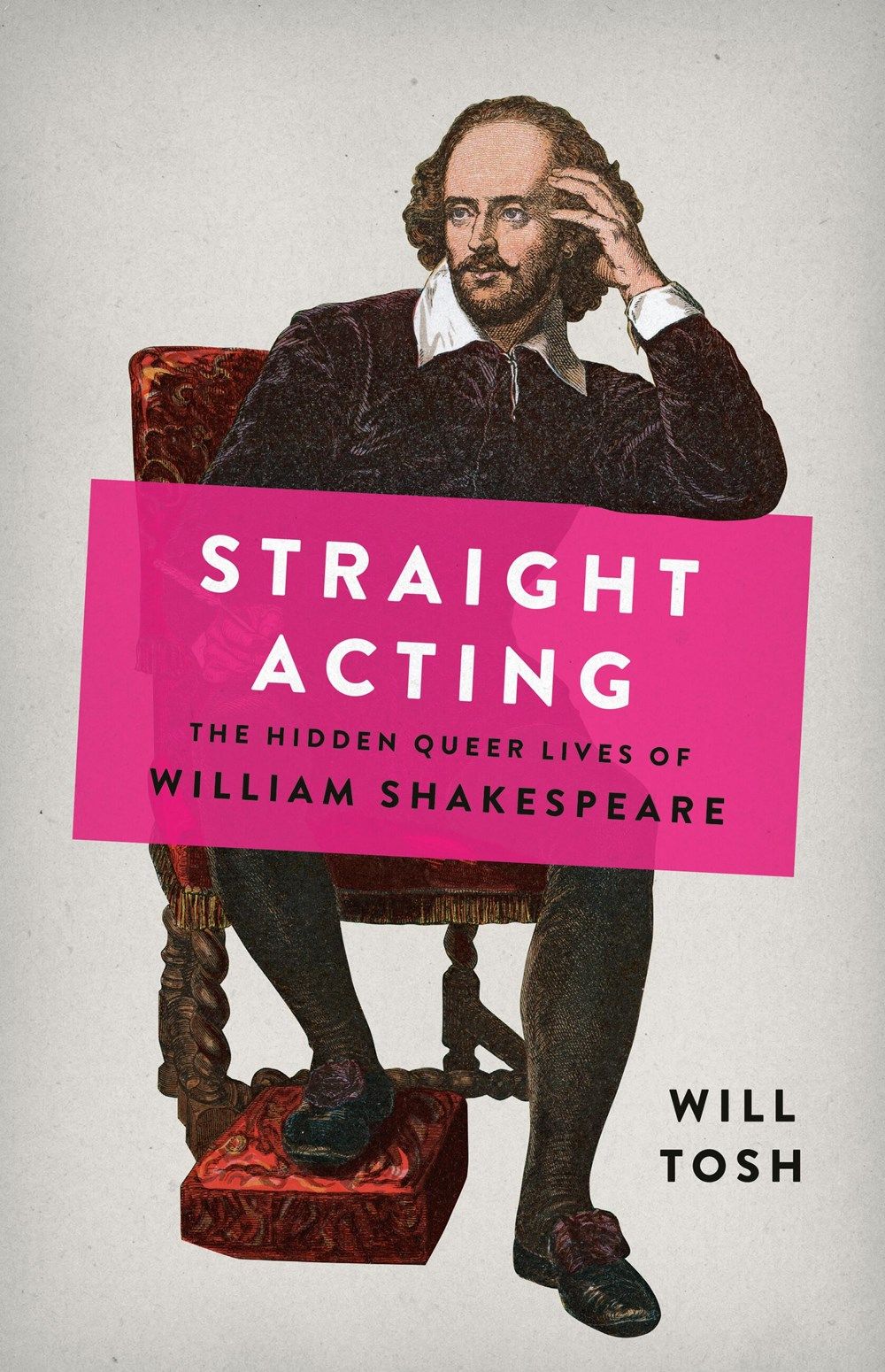
Straight Acting: The Hidden Queer Lives of William Shakespeare (Seal Press, September 17th)
Publisher’s Description:
A dazzling and “highly readable” (Guardian) portrait of Shakespeare as a young artist, revealing how his rich and complex queer life informed the plays and poems we treasure today.
In this incisive biography, Tosh reveals William Shakespeare as a queer artist who drew on his society’s nuanced understanding of gender and sexuality to create some of English literature’s richest works. During Shakespeare’s time, same-sex desire was repressed and punished by the Church and state, but it was also articulated and sustained by institutions across England. Moving through the queer spaces of Shakespeare’s life—his Stratford schoolroom, smoky London taverns and playhouses, the royal court—Tosh shows how strongly Shakespeare’s early work was influenced by the queer culture of the time, much of it totally integrated into mainstream society. He also uncovers the surprising reason why Shakespeare veered away from his early work’s gender-bending homoeroticism.
Nerd Rating: “dazzling and highly readable” is positive for everything except your nerd score. 5.
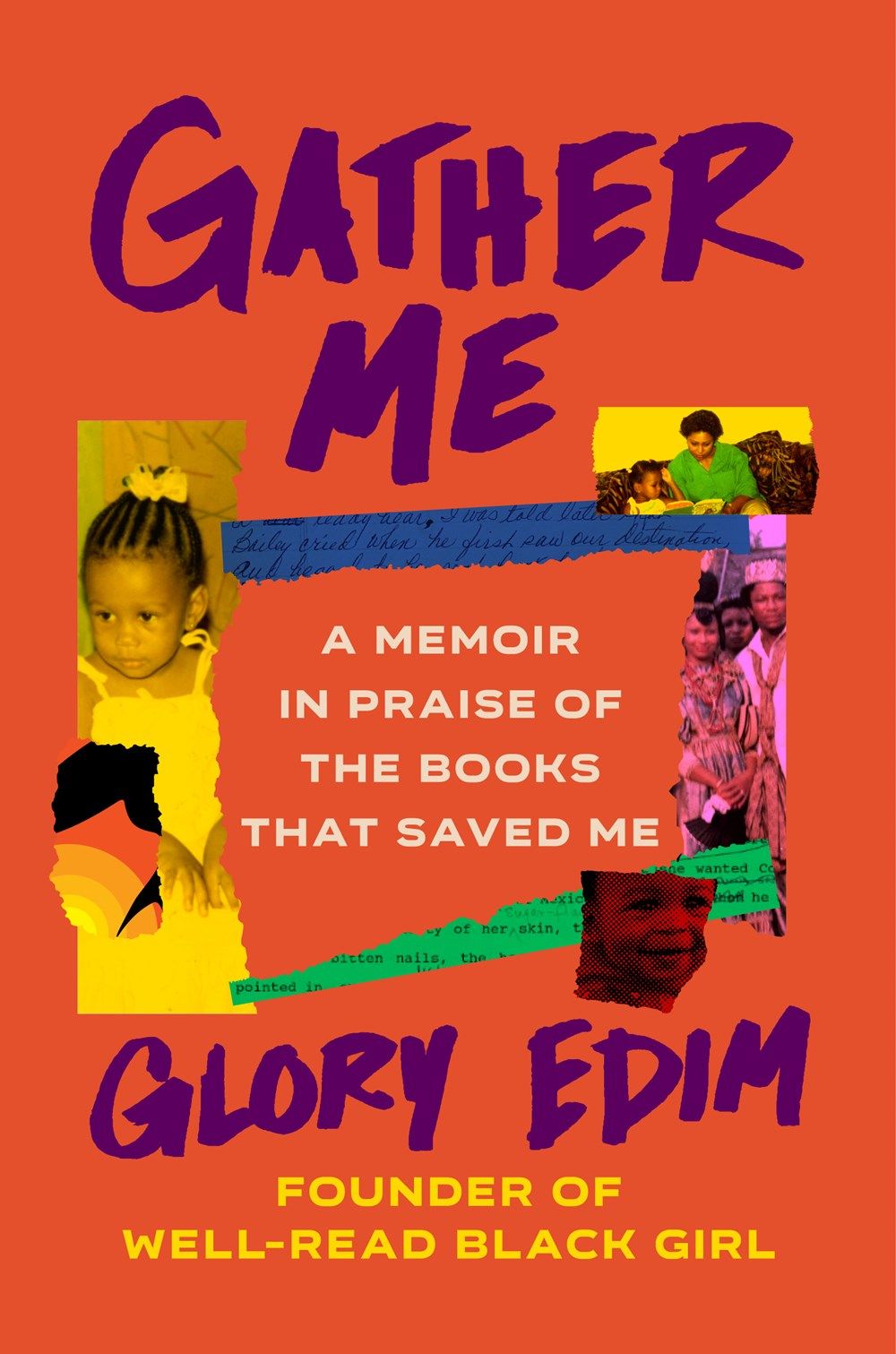
Gather Me: A Memoir In Praise of the Books That Saved Me by Glory Edim (Ballantine, Oct. 29).
Publisher’s Description:
For Glory Edim, that “friend of my mind” is books. Edim, who grew up in Virginia to Nigerian immigrant parents, started the popular Well-Read Black Girl book club at age thirty eventually reaching a community of half a million other readers. But her love of books stretches far back.
When Edim’s father moved back to Nigeria while she was still a child, she and her brothers were left with a single mother and little money, often finding a safe space at their local library. Books were where Edim found community, and as she grew older, she discovered authors and ideas she wasn’t being taught in class. In dorm rooms and airplanes and on subway rides, she found the Black writers whose words would forever change her life: Nikki Giovanni through children’s poetry cassettes; Maya Angelou through a critical high school English teacher; Toni Morrison while attending Morrison’s alma mater, Howard University; Audre Lorde on a flight to Nigeria. In prose full of both joy and heartbreak, Edim recounts how these writers and so many others helped her to value herself: to find her own voice when her mother lost hers, to trust her feelings when her father remarried, to create bonds with other Black women and uplift their stories.
Nerd Rating: 3. Edim is so smart and warm and passionate. This could be about shovels and I would read it.
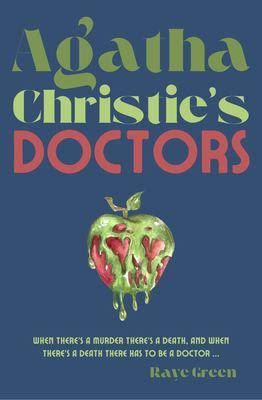
Agatha Christie’s Doctors by Raye Green (McNidder and Grace, Dec 31)
Publisher’s Description:
Apart from Agatha’s crime novels, there are numerous books written by fellow Christie enthusiasts on a range of topics, but one major subject which remains almost untouched is her doctors. Her doctors are variously depicted as healers, sleuths, victims, suspects or murderers. There are around 184 of them – and that’s just in the novels. They range from global experts in their field to reluctant, vague, muddle-headed old fools. The latter is a loose quotation, from Murder Is Easy – not necessarily the author’s opinion!
This book introduces Agatha Christie readers to her medics in her full length novels under chapter headings from murderers, victims, sleuths, fakes, suspects, police surgeons, Harley Street, Nurses and GPs.
Nerd Rating: I bet you were waiting for a 10. And you got one.

Ernest J. Gaines: Four Novels (Library of American, September 17).
Publisher’s Description:
A fitting tribute to a still underappreciated American genius, this volume also includes a chronology of Gaines’s life and career written by his authorized biographer, John Wharton Lowe, and helpful notes.
Nerd Rating: 2. I admit that including a LOA edition might be cheating just a little, but this is a terrific volume. Gaines I think is now a little underknown, so maybe this sort of collection can help keep his work alive.

Taylor Swift by the Books by Rachel Feder and Tiffany Tatreau (Quirk Books, Nov 26)
Publisher’s Description:
From Robert Frost’s road not taken on her debut album to Samuel Taylor Coleridge’s albatross on The Tortured Poets Department, Taylor Swift’s lyrics are filled with literary connections.
Make sure you’re catching them all with this expert guide to the novels, poems, and plays that influence her songwriting.
Let a literature professor and a musical theater artist guide you through the Taylor Swift canon—from Shakespeare to the Brontë sisters to Daphne du Maurier!
Nerd Rating. 1. Zero. Negative a billion. Anything to do with the most popular musician that I have ever seen cannot rate on the nerd scale.
